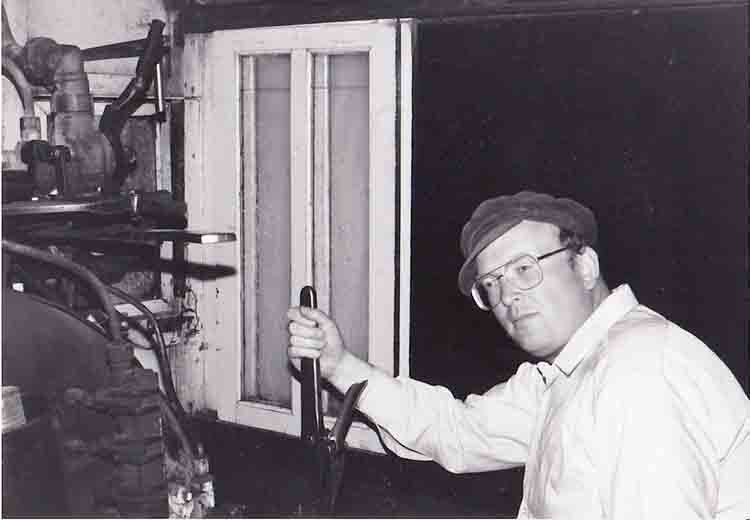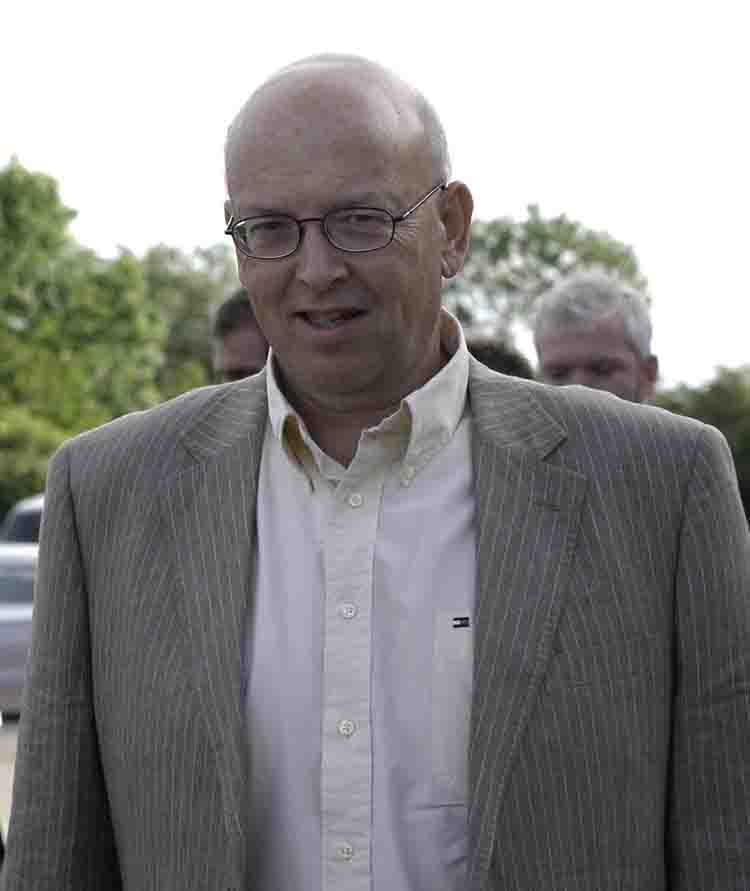Christopher J Walker 11 August 1951 – 2 August 2010
In memory of Chris Walker, and with the co-operation of his family, the Restoration and Archiving Trust has acquired an archive of material from the very large collection of railway items amassed by Chris who died far too young, just before his fifty-ninth birthday, in August 2010. He packed a lot into his life and had many interests, but railways were very much at the forefront. As a young boy, he lived in Low Fell, Gateshead, where his father was a minister. Chris remembered the colliery locomotives at work in the area, and developed a fondness for LNER locos. He also lived in Allerton, Liverpool to where his father had moved. He worked in various Lloyds Bank branches in the north of England before being seconded to Grindlays Bank in New Delhi, India, in October 1972, remaining there until March 1975. This gave him a taste for overseas railways. I was also working in New Delhi in March 1974, in Connaught Circle, just a short walk away from where Chris was located; I did not know him then and sadly we never met. Sad because I had a fair knowledge of the steam situation on Indian Railways and got around by train and bus, not always easy, while Chris was not so au fait with things, but had a bank car and a driver – which would have been very handy for travelling to all sorts of places!
Sometime in 1983 I first met Chris by chance at a social function when he was working at Lloyds, Gloucester and living in Cheltenham. It turned out that he had been to Cuba a year or two earlier on a railway trip organised by an American, Jim Hutzler, whom Chris had met when he was located at Lloyds Bank International in New York. I met Jim when I went to Cuba in 1980 to see some of the steam locos in the sugar mills, which were just becoming known about and accessible on organised visits, thanks to Jims hard work. Jim led the first ever enthusiast trip there, from the USA, in 1979, and had been able to extract a lot of information from MINAZ, the government body which ran the huge and economically important sugar industry in Cuba. The information obtained suggested there were around 600 steam locos in use on MINAZ tracks as recently as 1974, so there was plenty of exploring to do at the 150+ sugar Centrals located throughout Cuba. Both Chris and myself expressed the desire to go back to Cuba and do some more exploring, but at that time, it had to be on officially sanctioned organised trips, the regime was not happy about individuals wandering around taking pictures of railways and sugar installations. Arrest and incarceration were distinct possibilities at that time.
Chris was also active in railway preservation as Company Secretary for the Welshpool & Llanfair Railway. With my own involvement in narrow gauge preservation at Ashchurch and Toddington, this gave us more common ground. When Chris moved away from Gloucester in 1985, we stayed in contact, and a few years later, he moved to Lloyds Regional office in Bristol. By this time he had started to collect items of railway interest, focusing on foreign railways and, in particular, Latin America. We were able to visit Cuba again in March 1987, on a private trip along with Jim Hutzler and Wayne Weiss, these two guys knew more about Cuban railways than anybody else. Self-drive car hire had just become available in Cuba, so we drove right along the island, visiting as many sugar mills as possible. Some visits were extremely brief as we were chased away by security guards. We did get arrested and spent time in police stations, but fortunately we were allowed to continue on our way after being told not to visit sugar mills and definitely not take any pictures of trains. The appearance of Western tourists in the hinterland of Cuba in 1987 was very rare – I seem to recall the Cuban Embassy in London had issued less than fifty visas that year to UK citizens when I went to obtain mine. Tourists from the West were mainly confined to the tourist beaches and sightseeing in Havana and a few other places. Anyway we continued on our merry way, trying to steer clear of security, and adding to our knowledge of motive power at many mills. Centrals in the eastern part in Cuba already had a high ratio of diesel power, mainly Russian built, so finding any steam was regarded as a triumph. Jim knew about a mill which originally had a 2ft 6in rail system, but feared it may have been converted to standard gauge, a fate which had befallen quite a lot of mill railway systems in recent years. This mill, formerly Santa Lucia, was now called Rafael Freyre and was close to the tourist beaches of Guardalavaca, frequented mainly by Canadians. We got there and to our delight, not only was the mill still active, but was still 2ft 6in gauge and still operating steam, with about six or seven beautiful 2-8-0s which had been supplied to the mill many years earlier. Added to this was the superb scenery through which the railroad ran to bring the sugar cane from the fields to the Central. The main line was about 25km long. Our attempt to chase an outgoing empty train on the really terrible unmade potholed and rock strewn roads which followed the line soon came to grief when one of the said rocks – well, more like a boulder, - tried to come up through the floor of the car and wrecked the petrol tank in the process. End of chase, temporarily. But we made it back there and got some pictures, the locals were fairly friendly, the scenery superb, the performance of the locos on heavy full trains was magnificent; we were well pleased. We shared the discovery on getting back home and for several years the Rafael Freyre system became one of the highlights for railway enthusiasts in search of working steam in great locations. It was the jewel in the crown of working steam in Cuba.
Chris and myself went back to Cuba pretty well every year until steam at the mills ceased. Chris set about finding as much information as possible about Cuban railways and made many contacts both in Cuba and elsewhere, helping him to build up a large collection of photographs, timetables, books and much else. He also went on visits to places like Argentina, Bolivia, Peru again firing him with the ambition of acquiring more information about the fascinating railways in these countries, many of them having strong British connections in their financing, construction and operation. He had a seemingly infinite energy and capacity for searching out information and making worldwide contacts. He amassed an impressive collection of loco builders catalogues, works photographs, books and paperwork. Some very rare items came his way. Myself and Peter Witts made regular visits to Chris at his house in Bristol and were able to browse his latest acquisitions of photos, books, paperwork etc. The lounge had bookshelves virtually all around, with a veritable library of books on just about any railway subject you wanted to know about. Chris was always very generous in sharing his broad knowledge of all things railway with anyone interested and always took time to find and copy whatever he had on subjects you had asked him about. Nothing was too obscure for him to seek out information. Eventually Chris became interested in publishing some of the information he acquired and wrote articles for specialist railway publications and got involved with Donald Binns who ran Trackside Publications and had published books on Kitson-Meyer locos which ran in Latin America. Chris took over Trackside and published some more titles including his own work entitled Narrow Gauge Railways of Cuba From the 1860s to the Present Day. This book entailed a lot of research and was very well received. Chris had in mind to do a book on the Standard Gauge Railways of Cuba, he had started to compile some material, but his sad early demise means this ambition was not achieved.
However, we have been able to save some of the material in this archive, which
hopefully can be made available for serious researchers. At some time a list will be
compiled of the material in the Chris Walker Archive. It is mainly related to Cuba and
Latin America, but other parts of the world are included, including Indonesia, India
and parts of Africa.
Steve Mourton - January 2014

Chris in the cab of one of the Baldwin 2-8-2s on the Esquel line


